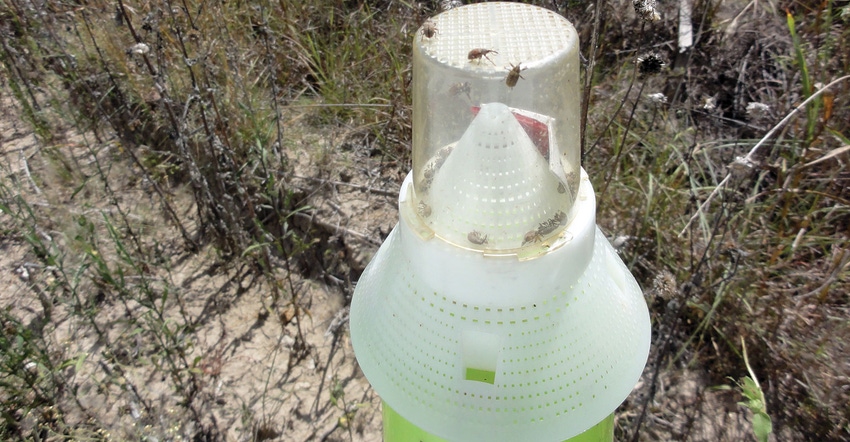April 14, 2020

Supporting boll weevil eradication, even though you haven't seen the pest on your farm in years, is difficult, but critical to the industry.
"If you've never seen the destruction a boll weevil causes, talk to a farmer who tried to eke out a living producing cotton before eradication," says John Lindamood, chairman of the Tennessee Boll Weevil Eradication Program (BWEP) board.
"The program reduced in-season sprays, lowered input costs, redirected the use of products to less broad-spectrum insecticides, and increased yields 20%," says Lindamood, who farms in Lauderdale County, Tenn. "It was positive for the environment and our pocketbooks, but it took a concerted educational effort to build farmer support in our area because boll weevil counts were not as high here as in the southern part of the state. Few saw an initial need to support it."
Tennessee cotton producer Willie German farms 20 miles from the Mississippi/Tennessee state line. He remembers high boll weevil populations. "Infestations were so heavy during early-season harvesting, we had to periodically shut down the picker, take a whisk broom, and sweep swarms of them off screens around the engine compartment," says German, a long-time proponent of the BWEP and the ongoing maintenance program. "Our referendum was held and passed in 2019, which extends the program another 10 years."
Tennessee's maintenance program is well-funded. "Our program has been debt-free for over a decade, and reserves are in place for emergencies," says Boyd Barker, BWEP administrator, Tennessee Department of Agriculture. "My message, especially to young cotton producers, would include an appeal to respect and protect the substantial investment made by their fathers and grandfathers to eradicate what was the most destructive pest in the history of cotton production."
David Blakemore, chairman of Missouri's BWEP board, says, "Our maintenance program had been on autopilot, but we felt it was prudent to start assessments before we exhausted surplus funds and had nothing for emergencies."
Missouri used that surplus to fund the maintenance program from 2010 to 2018. "I believe having that period of no assessments lowered grower awareness and the value of the program in the eyes of some farmers," Blakemore says. "A wise man once told me, 'if you value something at zero, it's going to be worth zero.'"
Missouri spent $41 million on BWEP efforts. "Today, cotton producers are faced with rising input costs and low prices, but trapping is an integral part of the maintenance program to protect that sizeable multi-year investment," Blakemore says."
Scouting, trapping and protocols
Some states operate an ongoing assessment collection system and have capture protocols in place. "We collect a dollar an acre that supports the maintenance program," says Farrell Boyd, manager, Mississippi Boll Weevil Management Corporation. "If a weevil is trapped, we place additional traps 400 feet apart on the field where the weevil was captured and on all fields within a 1-mile radius. We check those fields daily for a week. If we capture no additional weevils, we switch to weekly checks."
If trapping shows additional boll weevils within that mile radius, they extend the radius another mile and initiate control applications.
In 2020, all cotton producing states will continue contributing 25 cents per-acre to help fund BWEP efforts within the defined buffer zone area of the Lower Rio Grande Valley region of Texas.
About the Author(s)
You May Also Like






